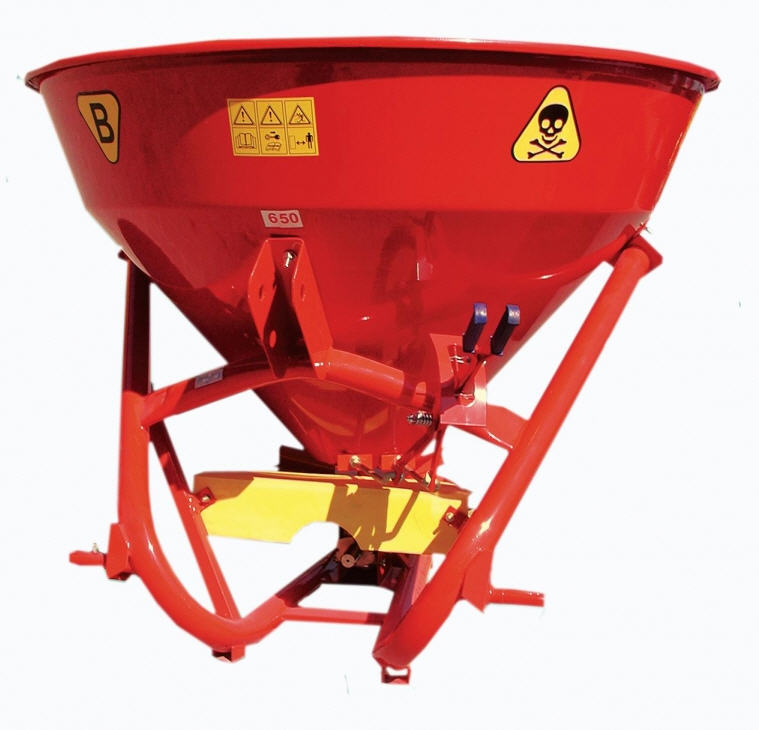 Mounted spreaders.
Mounted spreaders.
Spreaders are used for sowing lime, as well as for sowing other mineral fertilizers on these farms, which use high-dose fertilization.
Currently, mounted and trailed tractor spreaders are produced.
The basic units of the mounted spreader are: tank with agitator, the spreading unit in the form of a rotating disc with appropriately shaped blades, sowing amount regulating unit and conical drive gear. All units are mounted on a frame, which has a stand for hanging the spreader on the tractor. The drive to the spreading disc and the agitator is transmitted from the tractor's power take-off shaft through a conical toothed gear. Above the disc there is a fertilizer hopper in the shape of an inverted truncated cone. There is an arched cutout at the bottom of this reservoir, through which the fertilizer is poured onto the spreading disc. Between the bottom of the tank and the spreading disc there are two movable discs with arched cuts similar to those in the bottom of the tank. They are used to regulate the amount of fertilizer poured onto the spreading disc. If we set these shields like this, that their notches align exactly with the cutout in the bottom of the tank, then we will get the maximum seeding. This setting of the control discs is used when sowing fertilizer lime. If the arched cutouts only partially align with the cutout in the bottom of the tank, then we will obtain appropriately reduced seeding doses. The location where the fertilizer spills onto the spreading disc changes depending on the setting of the upper and lower discs. When spreading granular fertilizers, this place should be shifted in relation to the center of the bottom cutout, in the direction of rotation of the spreading disc and in the opposite direction when spreading powdery fertilizer. This ensures an even spreading across the entire width of the spreading belt. In this spreader it is possible to achieve seeding in the range of 50-2000 kg / ha [kg / hm2].